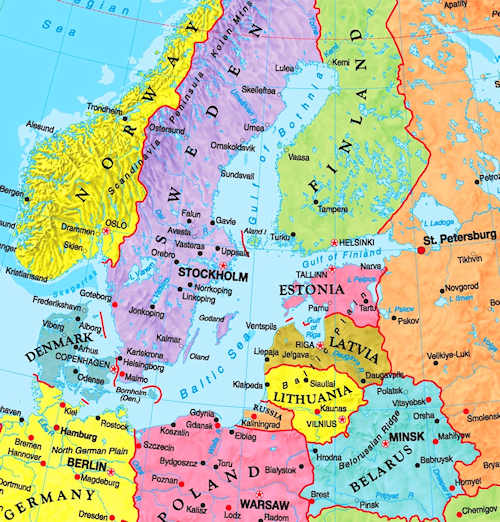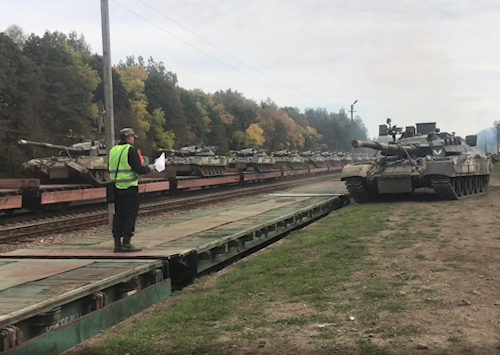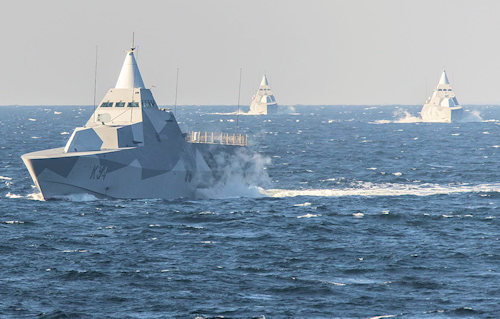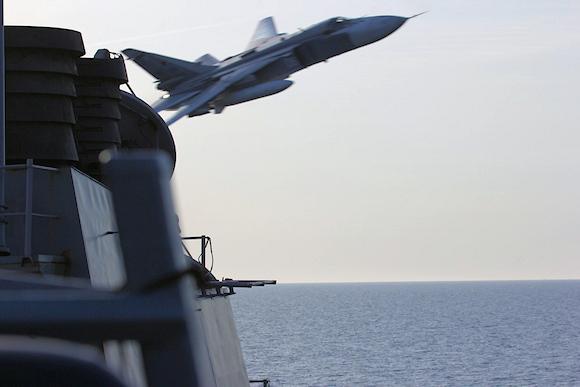The Baltic is part of the forgotten geopolitics; the collective imagination, when induced to think of the north, always lands in Scandinavia, perhaps in the Arctic, never in that small, cold sea, yet rich in amber, merchant traffic, lines of communication. A sea for which we fought, for which the regional hegemony has made its weight felt over the centuries. An icy sea, which washes lands with hot borders, where there have been no accidents for years, where there are no firings, but which remain under the surveillance of NATO, Russia, the EU. A 2000 km red line that starts from Finland, touches Estonia and Latvia, passes through Lithuania, evokes the Ukrainian echo, the Belarusian protests, the small green men; an iron curtain that marks the new border between East and West crossed by exiles who flock to the Baltic communities scattered between Europe and North America. A - not surprisingly - baldric aqueous, a belt of strategic, geopolitical, military and economic importance able to ensure the connection with the Atlantic, with its ports used for the transit of Russian oil to European markets, and Western imports to Moscow. A land that cannot ignore the search for a multidimensional form of security that invests all aspects, not just the military one; an area flown over by military aircraft, with submarines that plow the depths of the Baltic, Swedish, Norwegian, Danish waters, where the launch platform of the American power projection insists.
If a war for the Baltic itself is unlikely, a clash even if extemporaneous is much less so, given that in these waters any friction would explode by reflex even if fought elsewhere between Russia and the West, perhaps activating Kaliningrad, region militarized between Poland and Lithuania, with Scandinavia within assault range; from this point of view, it is necessary to recall how the Baltic Republics must be considered the vulnerable side of the Alliance, given that the only concrete connection between them and the West is a stretch of about 60 kilometers between Poland and Lithuania, known like the Suwalki breach, space subject to the potential activation of an A2 / Ad bubble1 from the Baltic.
Le Carrè, in the good weather that characterized the bipolarization of a war that in its cold was preparing incandescent scenarios, in his novels brought to the attention states and cities left, since before the 40s of the last century, under the dusty veil of history , and even earlier under the Swedish rule, under the control of the Tsarist double-headed eagle, under German oppression; the writer of the Cambridge circus he at least preserved the literary dignity for political subjects who, despite themselves, entered into a game of power balances too greater than themselves, so hegemonically strong as to make them suddenly inconsistent, a minor stumbling block in the course of history. It is no coincidence that Lithuania, Latvia and Estonia, the Baltic hinge that did not want to remain in the then CIS2 instead to enter the EU, a symbol of economic progress, and NATO, the balancing Alliance of Russian will, continue to celebrate the independence won in 1918 by considering the subsequent periods as an object - first Nazi and then Soviet - of pure occupation and transitory , but still a harbinger of not unjustified fears of a Moscow revanche.
 Despite the fact that history has united them, the three republics show significant differences and heavy historical legacies; Estonia, thanks to its proximity to Helsinki, has aimed at digitization, Lithuania has looked to the pragmatic south of Poland, while Latvia has had to take note of a controversial homeland history3 it's difficult. The policy adopted towards ethnic minorities has suffered from relations, especially past ones, with Russia, which is why Riga and Tallinn have adopted political-social lines of action that are perhaps understandable but certainly not justifiable according to European standards: national languages are were brought to light and, on their knowledge, after independence, the test was based for granting citizenship to that portion of the population without a certificate of residence that did not pre-date World War II. While it remains increasingly difficult to grant certifications to those who are considered the direct descendants of the last occupants, a marked denatality is looming in the background.
Despite the fact that history has united them, the three republics show significant differences and heavy historical legacies; Estonia, thanks to its proximity to Helsinki, has aimed at digitization, Lithuania has looked to the pragmatic south of Poland, while Latvia has had to take note of a controversial homeland history3 it's difficult. The policy adopted towards ethnic minorities has suffered from relations, especially past ones, with Russia, which is why Riga and Tallinn have adopted political-social lines of action that are perhaps understandable but certainly not justifiable according to European standards: national languages are were brought to light and, on their knowledge, after independence, the test was based for granting citizenship to that portion of the population without a certificate of residence that did not pre-date World War II. While it remains increasingly difficult to grant certifications to those who are considered the direct descendants of the last occupants, a marked denatality is looming in the background.
What happened in Georgia and still happens in Ukraine leads us to fear the worst, with the Russian Bear wounded by the Soviet dissolution, but striving to regain the pre-existing sense of geopolitical security and to guarantee the protection of Russian speakers wherever they are; a reason, the latter, more than sufficient to opt for both a rigid Atlantic orthodoxy on the Baltic side it advises against supporting the less assertive and smoky European defensive projects, and in the assumption of however conciliatory attitudes towards Brussels, despite belonging to the Trimarium4, yes, an Atlanticist association but not unrelated to less Europeanist political lines common to the Visegrad group5.
On the Baltic shores, Russia remains a revanchist state pursuing a power policy made up of territorial conquests (Crimea), proxy wars (Donbass), hybrid offensives and cognitive warfare based on disinformation6 which undermines the entire eastern flank of the Atlantic Alliance, which in no way can afford to neglect the Finnish and Swedish shores. As a color note, it would be enough to remember that the major exercises conducted by the Russian Army are entitled Zapad, West. Moreover, one cannot fail to consider the effect of a geography dominated by flat and indefensible territories which prevented the Baltic arc from resisting the conditioning of the contiguous powers, also pursued with techniques of cyberwarfare similar to those which in April 2007, unleashing an unprecedented attack on Estonia, led to the creation of the CCDCOE7 and the drafting of Tallin Manual, or as the most current controversy concerning the supervision of Chinese initiatives related to the vulnerabilities of Chinese 5G that saw Vilnius pitted against Beijing8; Lithuania, squeezed between Moscow and Kaliningrad, has understood that by opposing Chinese penetration it can obtain real credit against Washington.
In this context, the American strategic interest can be glimpsed, aimed both at wedging Russian-German relations and in controlling the fault points, especially now that the Ukrainian crisis has awakened the fears of those who do not have - and cannot have - the same courage of the vilniusski nastavnik9 Marko Ramius escaped, thanks to Tom Clancy, with the Red October. The same wedge embodied on the other side of the barricade from the Russian exclave of Kaliningrad, the largest advanced military base in Europe only 104 km from Belarus and equipped with weapons capable of inhibiting access to the northern Baltic to protect theheartland russo.

However, those who in reality have remained too close to the borders of the Kremlin, cannot fail to fear having to face the same challenges that now engage Kiev, united by the large Russian-speaking representatives, with the Baltic Westernization ready to recall the geopolitical defeat of the private Kremlin of the its security buffer in favor of a persistent affinity towards Germany, credited with having helped support the cause of Lithuanian independence during the Cold War.
The Baltic situation sees two strong contrasts: on the one hand, the aspiration of Tallin, Riga and Vilnius, economically more lively than the regional average, to escape Russian energy dependence by resorting to shale imported from the USA; on the other, the German attempt to increase its privileged economic and geopolitical relationship with Russia.
The questions are not few: do Americans and Europeans really intend to die for the Baltics? The intentions expressed by the Lublin Triangle10 whose angles are attested on Warsaw, Kiev and Vilnius?
Article 5 of the Atlantic Pact guarantees intervention in defense of the attacked ally taking immediately, individually and in concert with the other parties, the action they deem necessary, including the use of armed force, a conceptual and chisel masterpiece that opens more than one interpretative door in a key of deterrence.
Realistically, a conventional Russian attack is currently to be considered unlikely, although what falls within the canons of hybrid and asymmetrical warfare cannot be excluded, given the Kremlin's anger both for the Atlantic expansion towards the east and for discrimination against the Russians. , or rather reactions to years of undeniable territorial disputes, which have seen both Estonia losing despite the provisions of the Tartu Peace Treaty of 1920, and the latent hostilities that have led to the Russian-Baltic ethnic polarization only partially alleviated by attempts to establishment of friendlier relations with the Kremlin aimed at avoiding a possible ukrainization.
Economically, Russia can propose itself by exploiting the energy leverage exercised through its network of oil and gas pipelines, keeping prices high unless proposing final economic-political agreements that leave the door open to the Kremlin and its energetic suasion. All this in light of the agreements relating to the pipeline Nord Stream, at the moment phlegmatized due to lack of requisites useful for German technical recognition and inspiration for political initiatives that recall both the Russian-German pacts of 1939 and the Cold War. To this day, Berlin has facilitated Moscow in its strategy of Divide and conquer which weakens the already fragile European unity affected by the unexpected increase in Russian gas production, and by the fickle Kremlin policy.
 It must also be said that the differentiation of energy sources by the EU, subject to vulnerabilities regarding the size and nature of the energy market, based on the extraction of natural gas, would re-propose the strategic problem connected to the defense of free Baltic navigation, threatened by operational decay. of some navies, such as the Swedish one, who have knowingly renounced the ASW11, which is associated with the defense of Baltic Pipes, a strategic gas pipeline intended to transport gas from Norway to Poland via the Copenhagen and Stockholm EEZs; a union, the European one, divided, weak and easy object of the heavy arrows of Minister Lavrov, never so generous with criticism and reproaches while Minister Shoigu announced the strengthening of nuclear forces and conventional deterrent weapons along the borders.
It must also be said that the differentiation of energy sources by the EU, subject to vulnerabilities regarding the size and nature of the energy market, based on the extraction of natural gas, would re-propose the strategic problem connected to the defense of free Baltic navigation, threatened by operational decay. of some navies, such as the Swedish one, who have knowingly renounced the ASW11, which is associated with the defense of Baltic Pipes, a strategic gas pipeline intended to transport gas from Norway to Poland via the Copenhagen and Stockholm EEZs; a union, the European one, divided, weak and easy object of the heavy arrows of Minister Lavrov, never so generous with criticism and reproaches while Minister Shoigu announced the strengthening of nuclear forces and conventional deterrent weapons along the borders.
Will a war break out in the Baltic area, given the Ukrainian events? In her not too old study, Rand highlighted a scenario in which NATO forces would run the risk of encountering a heavy defeat, thus leaving the Baltic Republics at the mercy of the Russian shock wave. The weaknesses highlighted, first of all that concerning the structural weakness of the Alliance, in which the process of decision making it appears too slow and cumbersome. At the moment, however, neither side seems really intent on triggering an armed escalation; the balance of terror, due to the Cold War-style nuclear threat, turns out to be once more an element of rational choice. To this must be added the consideration that Russia, on the basis of the precepts of the KGB, is trying to threaten actions without however precluding any option, in the hope of unbalancing the interlocutors.
Each of the contenders is aware of the fact that the particular Baltic geographical configuration would allow the prohibition of trade routes, determining a strategic impasse, a political-military stalemate from which everyone would be defeated. The Baltic scenario is peculiar, as it is integrated in the Euro-Atlantic area; if the Ukrainian war would have such serious consequences for Moscow, a Baltic conflict could lead to a much worse scenario.
1 anti-access and area interdiction
2 Commonwealth of Independent States
3 Indeed, the establishment of Latvian SS combat units has not been forgotten
4 political platform since 2015 to which 12 EU member states including the Adriatic, Baltic and Black Sea have joined,
5 political alliance between Poland, Slovakia, Czech Republic, Hungary
6 In 2016 Riga identified Sputnik as a propaganda tool by banning him from operating. In 2019 Baltnews became the property of Russia Today, another Kremlin-controlled international television network.
7 The NATO Cooperative Cyber Defense Center of Excellence
8 The end of the partnership between Lithuania and China was also highlighted by the opening of a representative office in Taiwan.
9 Master of Vilnius
10 regional economic, cultural and political cooperative initiative of Lithuania, Poland and Ukraine, with the aim of strengthening mutual military, cultural and economic support and supporting Ukrainian integration into the EU and NATO
11 Anti Submarine Warfare
Photo: US Navy / web / NASA / MoD Russian Fed / Swedish Navy












